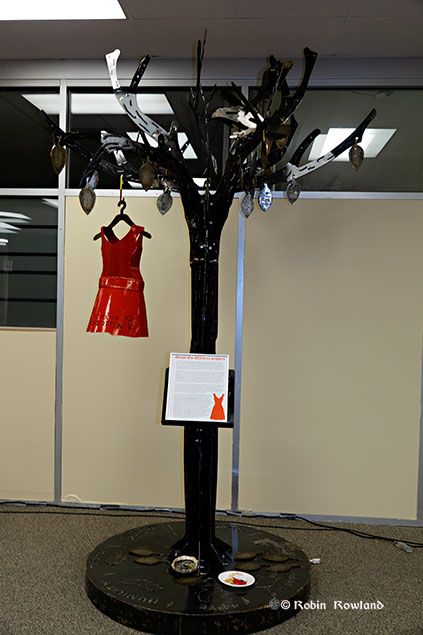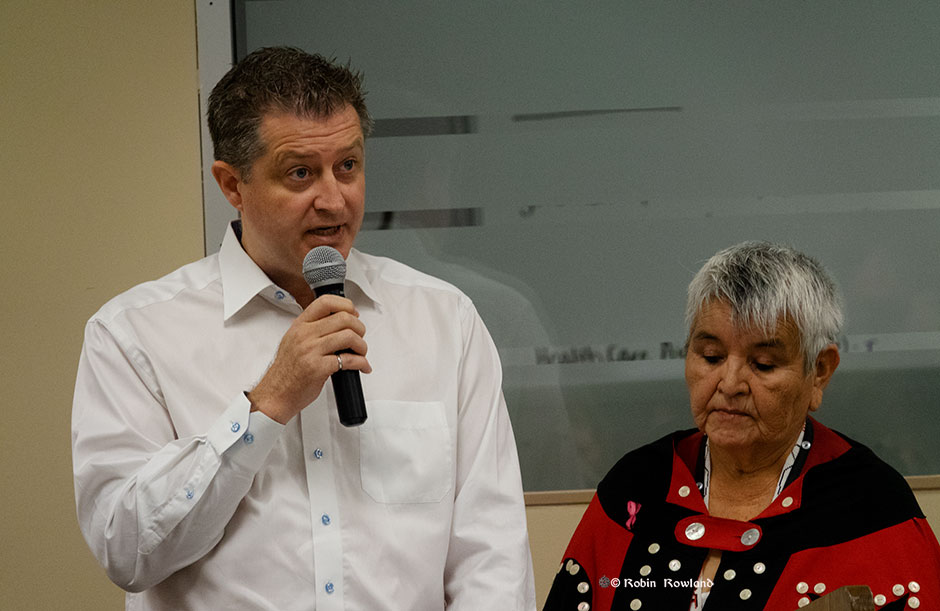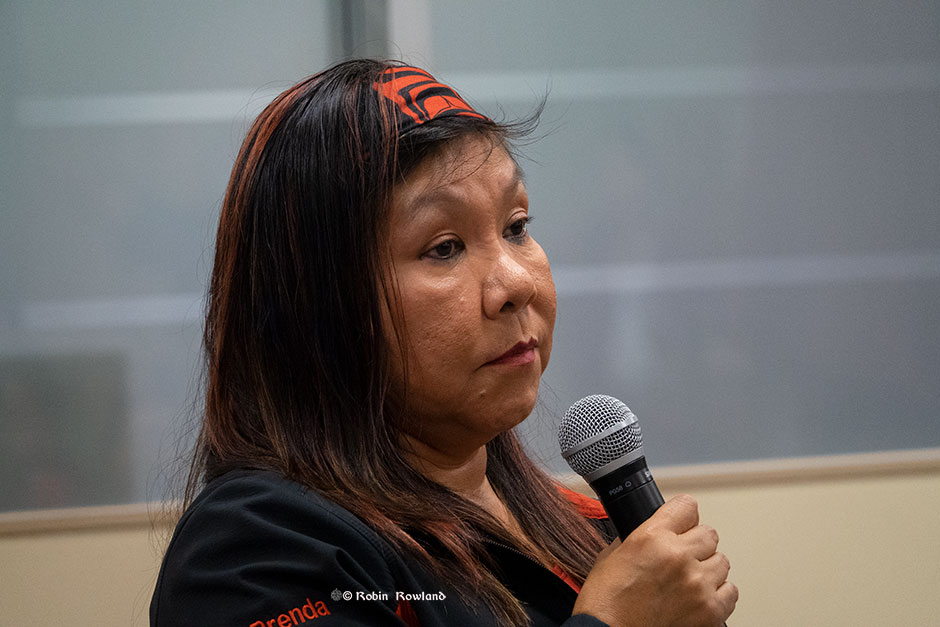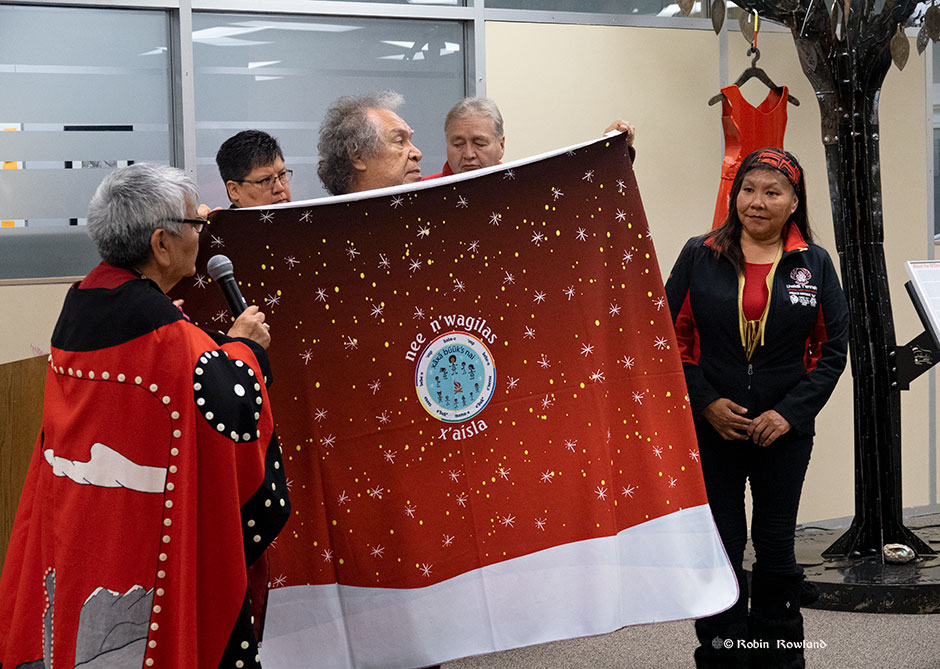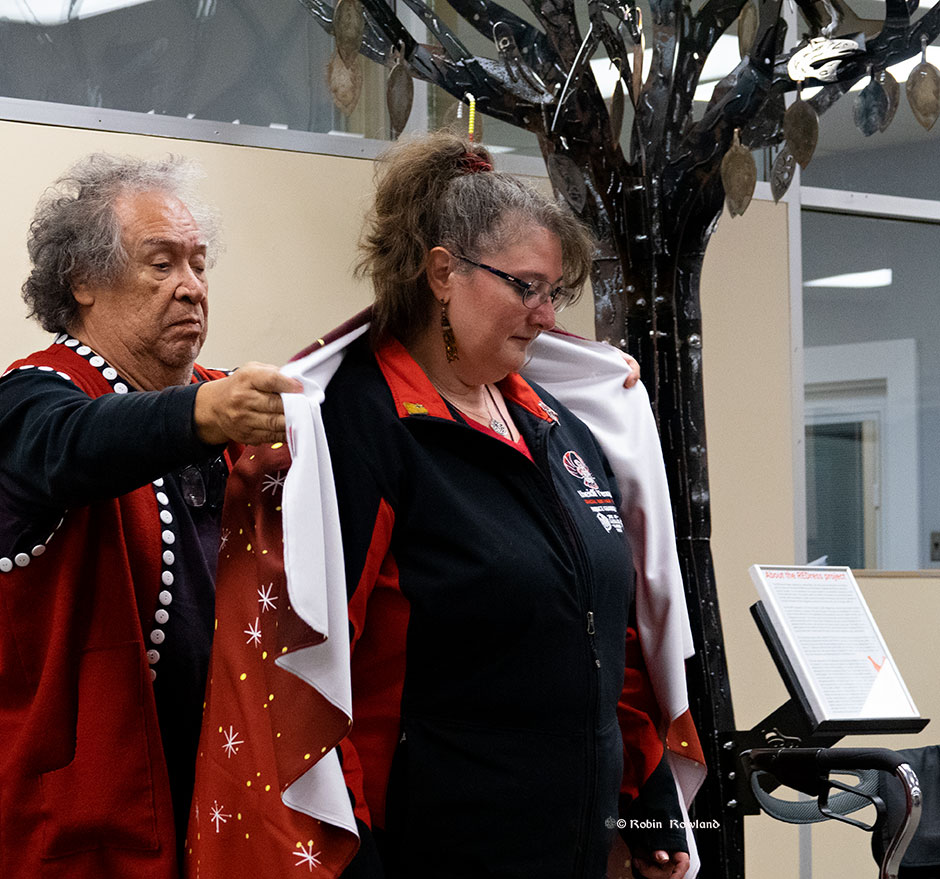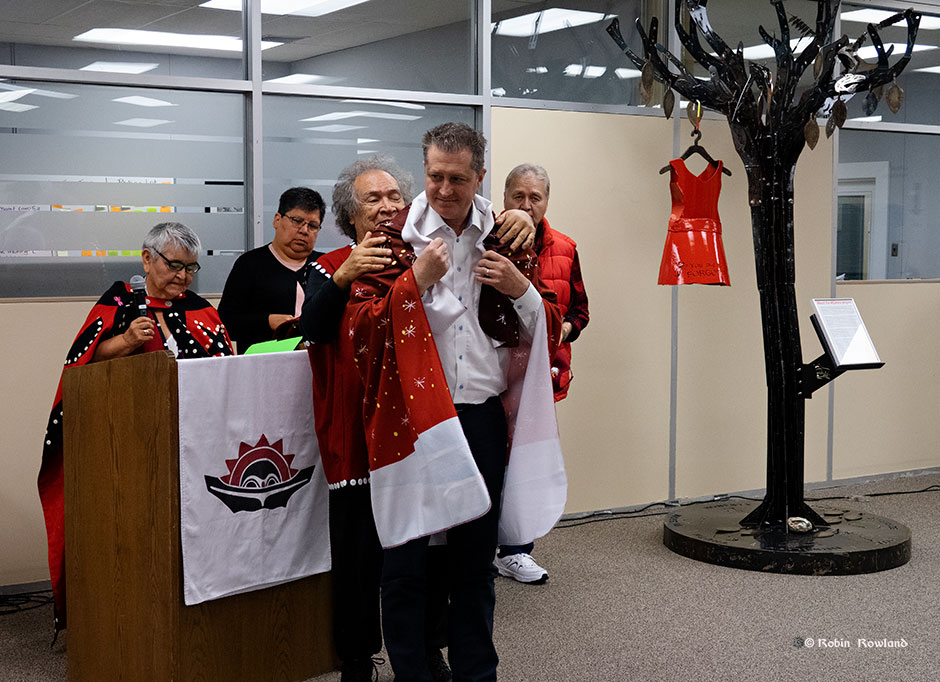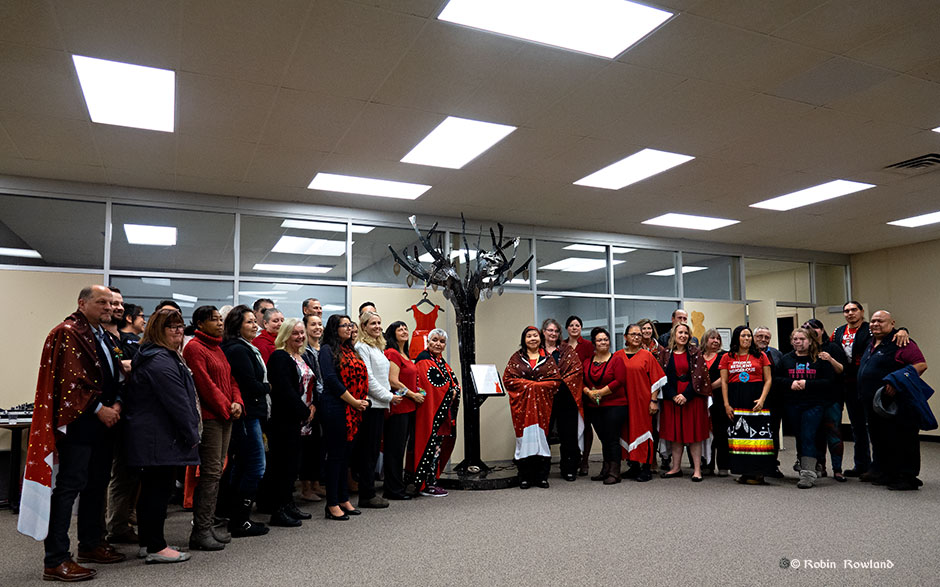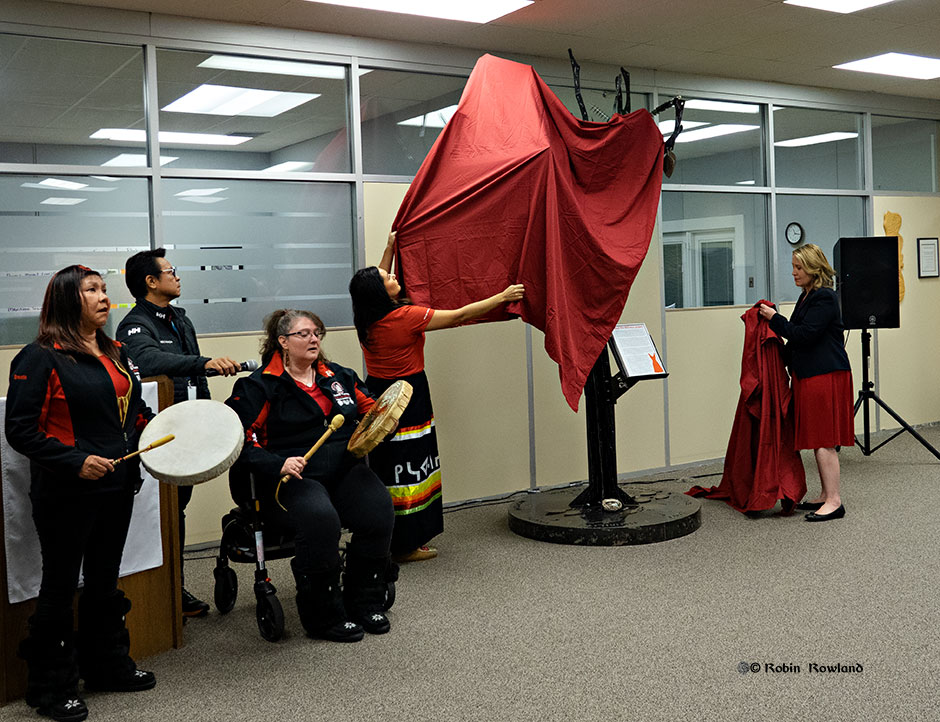A welded and sculpted metal tree created by two Grade 12 students in memory of Canada’s murdered and missing indigenous women and girls was unveiled in the lobby of the Kitimat Valley Institute on Friday, October 4, 2109, where it will be on permanent display.
The tree was created by Trinity Harry, 17, Ojibwa Nation, from Little Black River, Manitoba and Joseph Ginter, 16, Ojie-Cree, from Garden Hill, Manitoba, students at the Russell Vocational High School in Winnipeg. The project was supported by the Arx & Sparx Welding Camp Program and the CWBwelding Foundation with sponsorship from LNG Canada. The company is supporting welding camps for young people to introduce them to a career in the skilled trades.
The memorial tree features a red dress, part of the Red Dress Project created by artist Jamie Black to bring attention to the issue of missing and murdered indigenous women across Canada by displaying red dress related art work across Canada. Most of the women, speakers and guests at the unveiling wore a red dress at the ceremony.
Harry and Ginter, along with their instructors, spent over 300 hours designing and fabricating the tree.
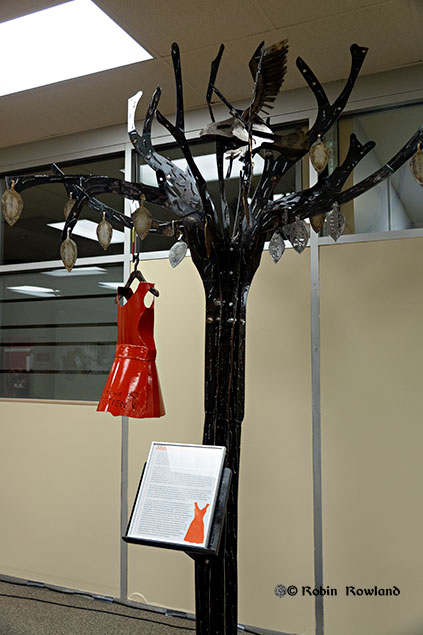
A plaque describes the tree as “dying.” Fallen leaves on the base represent the fallen indigenous women and girls. Future welding classes will add more leaves to honour more women.
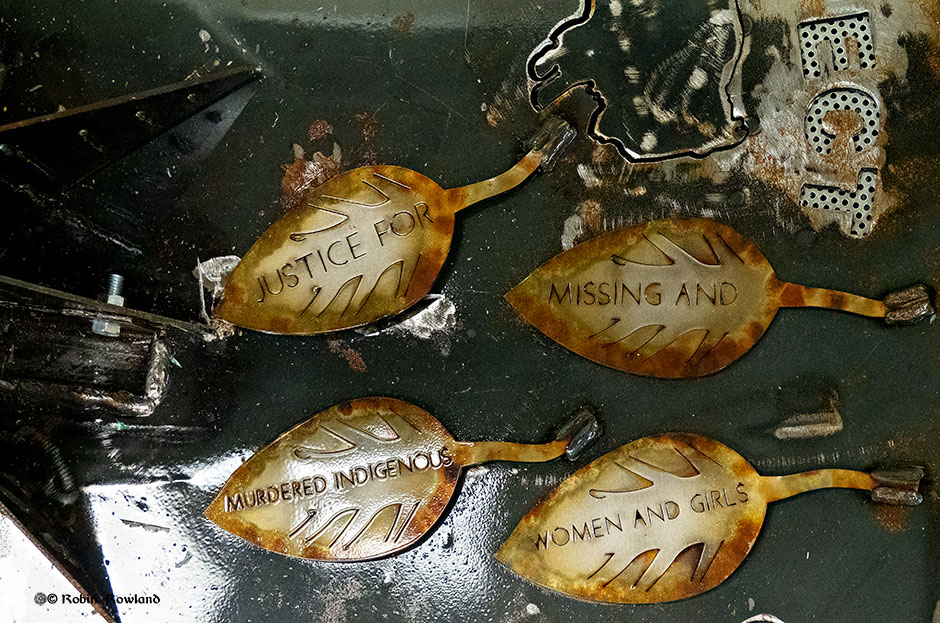
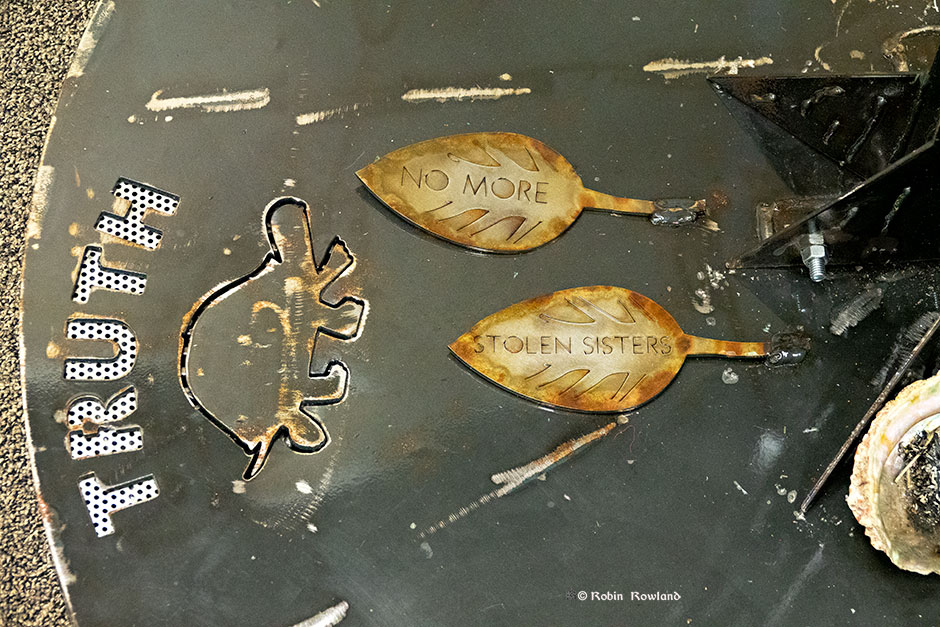

The eagle represents the love for the missing.
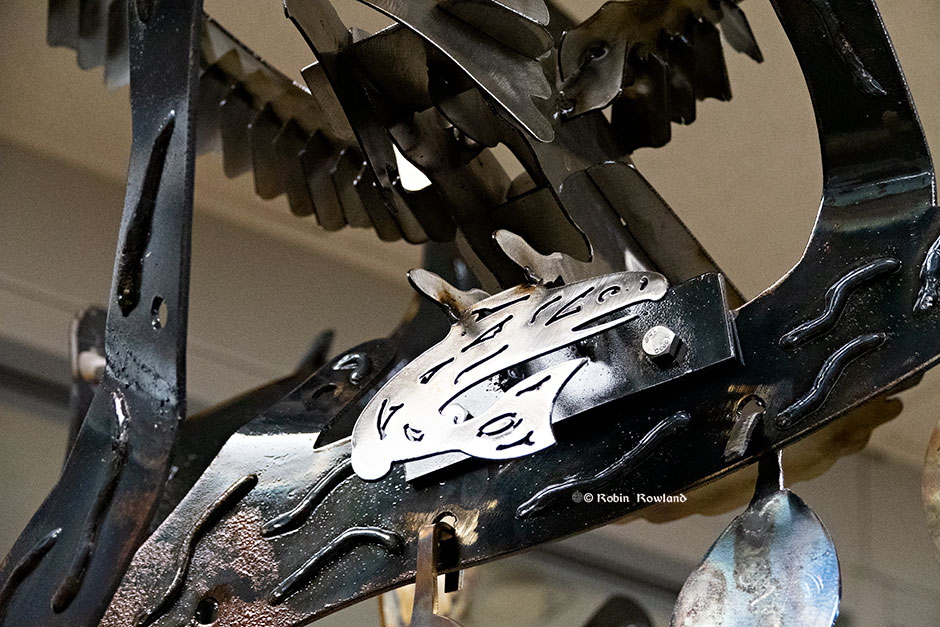
The salmon represents the Haisla Nation on whose traditional territory the sculpture is displayed.
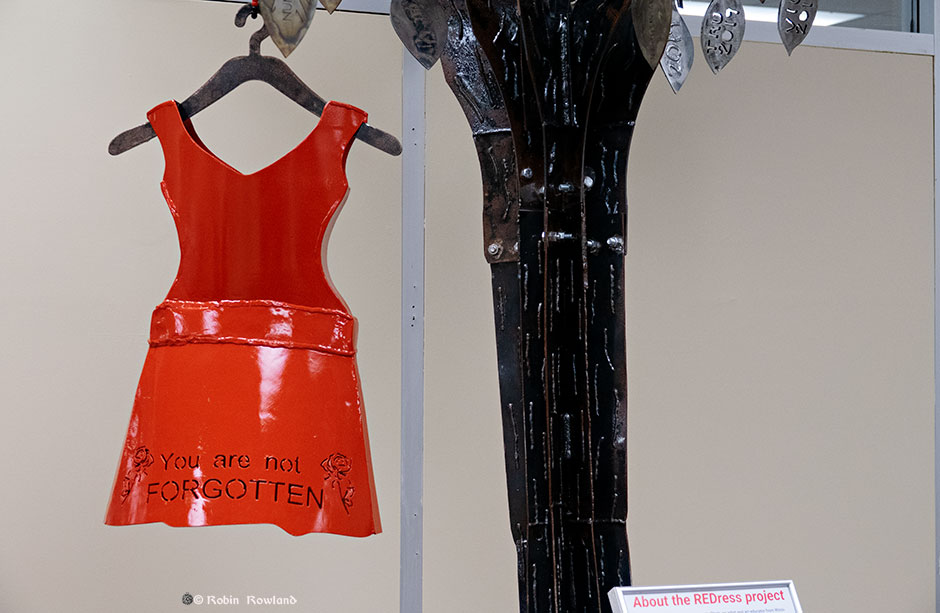
According to the RCMP, at least 1200 indigenous women have been murdered or have gone missing during the past 30 years. The plaque says the red dress was chosen because “So red is really a calling back of the spirits of these women and allowing them a chance to be among us or have their voices heard through their family members and community.”
